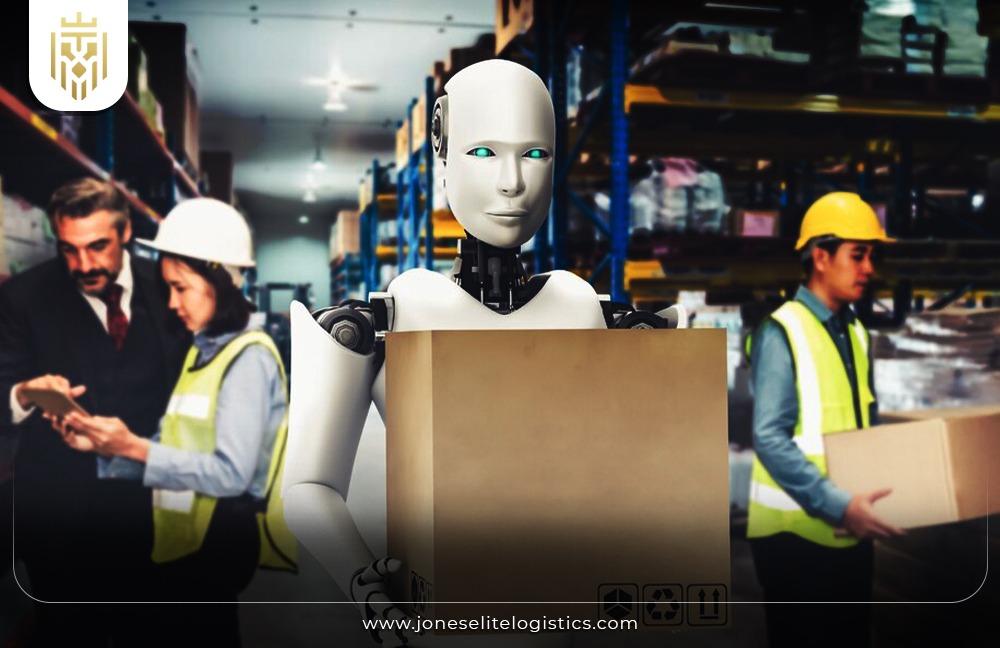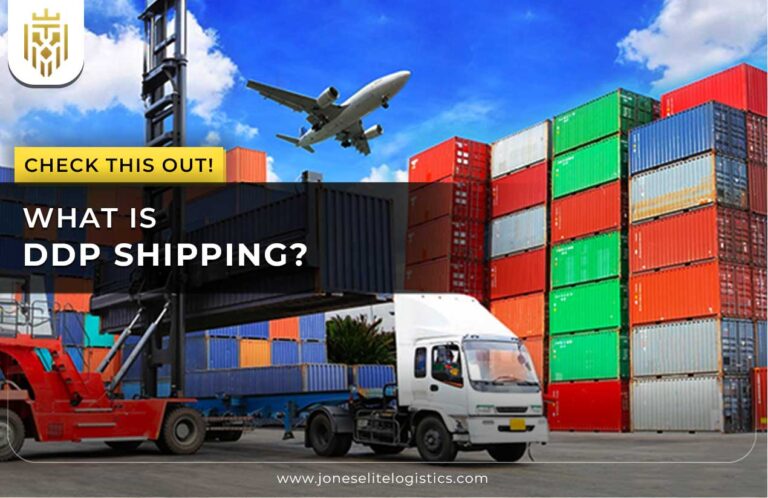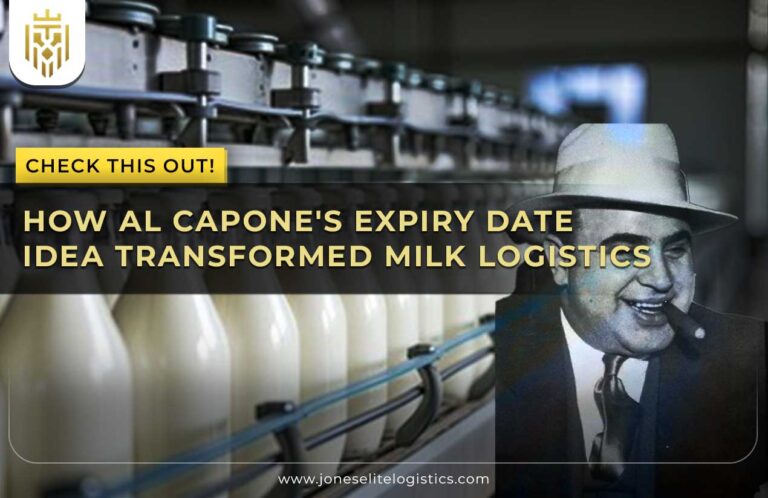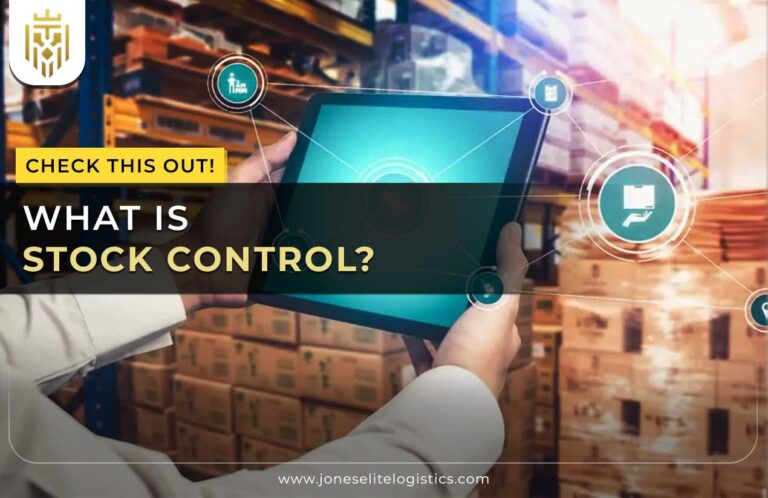Technological advancements have had a significant impact on various industries, and logistics is no exception. The global rise of e-commerce has resulted in a growing demand for faster and more efficient delivery services. To meet these demands and retain customers, the logistics industry is exploring logistics automation solutions. In this article, we will delve into the concept of logistics automation, its benefits, and the potential it holds for the future of logistics.

What is Logistics Automation?
Logistics Automation alludes to the implementation of technology to perform logistics-related tasks that are involved with the movement and storage of goods. It consists of logistics systems like warehouse management system (WMS), customer relationship management (CRM), and real-time tracking of goods, and types of machinery like robotic arms, automated vehicles, and automated storage & retrieval systems (AS/RS).
Why Logistics Automation Matters in 2024
Currently, technology has been of great aid in getting a majority of time-consuming and heavy labor tasks done for numerous industries, especially logistics, where a lot of heavy moving occurs. Moreover, the demand for speedy on-time delivery of goods with minimal to zero damage is only rising, pushing for the implementation of logistics automation to answer the demands of the global logistics automation market.
Benefits of Logistics Automation:
A crucial advantage of implementing logistics automation is it greatly reduces the chances of a human/unfortunate circumstance error impacting the company’s supply chain management and other areas. Other benefits include:
Efficiency Boost: Streamlining Operations with Automation:
This strategic approach leverages the capacities of technology towards maximizing production logistics, from warehouse management and order processing, to the transportation management of goods to and from their locations. It removes unnecessary complications and provides a clear picture to the management of the company’s position.
Cost Savings: How Automation Cuts Down Expenses:
The purchase and implementation of automation solutions is usually a one-time process, with maintenance costs rearing its head occasionally. In addition, automation streamlines operations under a single supply chain, which reduces manual labor and increases production and profit over time.
Accuracy and Precision: Improving Processes with Automation:
Logistics automation accelerates order processing and decreases lead times, which ensures faster, smoother, and better operations are maintained consistently. The automation benefits cross mere productivity metrics as they help meet the growing demands for efficient logistics management.

Automated Logistics Management Systems:
This technology comprises numerous systems combined to streamline and perform logistics-related procedures. It enables scaling operations without increasing the workload.
The Role of Automated Systems in Modern Logistics:
It depends on the needs and requirements of the company, as it can leverage different sections of logistics management systems to improve certain operations separately. Utilizing single solutions requires a well thought out approach, as implementing the improper solution can complicate the logistics process.
Features and Capabilities of Automated Logistics Management Systems:
Automated logistics management systems come with built-in features such as real-time tracking, supply chain visibility, inventory management, and forecasting features. The capabilities of the system cover extensive areas of inventory, order fulfillment, fleet, and warehouse operation under one roof.
Implementing Automated Systems for Enhanced Efficiency:
Automation of logistics-related tasks improves the processing of large-scale documents, enables offering personalized services far more easily, manages the complex world of workforce management, and improves business visibility by tracking each product

Trends in Logistics Automation for 2024:
22024 is witnessing a rise in the implementation of warehouse automation in logistics, giving rise to robotic process automation, the Internet of Things (IoT), automated systems, and artificial intelligence.
Technological Advancements Shaping Logistics Automation:
A prominent example would be the simple barcode scanning system, which efficiently tracks the movement of goods and also updates stock levels in real time. This helps streamline inventory management and prevents fallacies in warehouse automation.
Industry Applications of Advanced Automation Technologies:
Several prominent industries are leveraging automation solutions to their benefit. The oil and gas drilling companies place sensors and other monitoring equipment for technicians to work in oil fields with a lesser risk of encountering a potentially dangerous and difficult situation.
Future Outlook: What to Expect in the World of Logistics Automation:
The global market size of logistics automation was valued at USD 59.54 billion in 2022 and is expected to grow from USD 67.40 billion in 2023 to USD 181.73 billion by 2031, growing at a CAGR of 13.2 percent. The booming e-commerce sector is a key driving force towards an increased demand for reliable logistics companies worldwide.
Overcoming Challenges in Logistics Automation:
Everything in this world comes with challenges and misconceptions, and logistics automation stands as no exception. The following lines shall discuss them and clarify the workings of logistics automation:
Addressing Concerns and Misconceptions About Automation:
Automation does have a cost to implement, but delaying process automation can reduce output and customer demand. Properly designed automation systems come with clear instructions to tackle maintenance issues.
Training and Skill Development for the Automated Workforce:
The mere implementation of logistics automation solutions does not boost the output, rather the training and skill development of the employees for the system helps.Training employees on automation solutions like safety protocols, inventory management, and equipment operations is vital to fully leveraging logistics automation. Continuous reskilling and upskilling ensure optimal efficiency.
Integrating Automation Seamlessly into Existing Logistics Processes:
Modern automation systems are designed to merge smoothly with existing logistics processes. The company can start by implementing automation solutions for one or two procedures, and keeping track of their performance and compatibility with the workers, adjustments can be made to make the integration more seamless. 
The Human Element in Automated Logistics:
The human element is the brains behind running automated logistics. Technology brings operational efficiency and accuracy to logistics operations, however, the adaptability, decision-making, and problem-solving skills of humans are what truly bring progress to the logistics industry.
Collaborative Automation: How Humans and Machines Work Together:
Collaborative robots stand as a prominent example of perfectly working together with human beings. The robots perform repetitive and physically demanding tasks, which allow the human operators to focus more on the creative and skilled aspects of these procedures.
Role Redefinition: Adapting to New Roles in an Automated Environment:
An automated environment changes the requirements of employees, which shifts towards more mentally demanding tasks. The company needs to implement updated training sessions to ensure employees are more familiar with the workings of the logistics systems and leverage them to reap more benefits.
Maintaining Human Touch: Balancing Automation with Personalized Service:
Logistics automation solutions focus on only one aspect of the business: increasing output. However, other aspects like retaining customers, implementing unique solutions to unknown new problems, and giving excellent deals to customers, all depend on the human beings behind the implementation of logistics automation solutions. In addition, customers tend to return for more services if they have been prioritized and their needs have been attended to, which is possible only by human interaction.
How to ensure successful Logistics Automation Journey?
A successful logistics automation journey involves optimizing inventory management, reducing costs through automation, and improving route management. Predictive maintenance, demand forecasting, and warehouse automation streamline operations, while route optimization saves time and fuel, enhancing efficiency and overall customer satisfaction.
FAQs
1)Can logistics be automated?
Yes. A majority of logistics operations are already automated, from warehouse operations to transportation and inventory management.
2)What is the potential of automation in logistics?
The global market size of logistics automation was valued at USD 59.54 billion in 2022 and is expected to grow from USD 67.40 billion in 2023 to USD 181.73 billion by 2031, growing at a CAGR of 13.2 percent.
3)What are robotics and automation in logistics?
Robotics and automation in logistics refers to the utilization of computers, software, and systems to handle logistics procedures and machinery.
4)Will logistics be replaced by AI?
AI only improves the physical stats of a company’s logistics. However, it can never substitute human expertise regarding decision-making, adaptability, and problem-solving.







